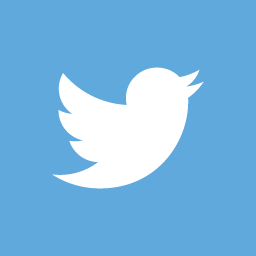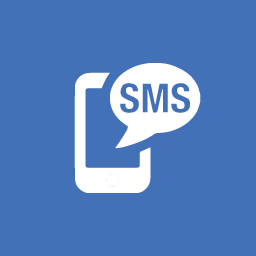How Dancehall-Inflected Is Drake’s Album More Life, Really?
When “dancehall” actually means “Other-y seeming / Afro-something / Can’t quite place it.”
More Life, the newest vehicle for Drake’s distinctive sound, is a recalibrated convergence of the various Black Atlantic waves — grime, dancehall, afrobeats, trap & b — that powered his 2016 album VIEWS. But one influence in particular seems to be clicking with (or triggering) the album’s first listeners; if you dumped all those first listens and news posts into a database and did a quick control-F search, "dancehall-inflected" might be the most repeated descriptor so far.
The comparison is certainly invited by the title, a Rastafied invocation that’s been used to name at least one or two one drop riddims in the past. A closer listen, however, doesn’t turn up anything that really resembles a dancehall riddim, or even the dancehall-adjacent ragga soca and afrobeats tracks that made “One Dance” and “Too Good” ubiquitous on diasporic dancefloors last summer. The closest thing to a reggae beat, in fact, is “Ice Melts,” a trap beat built by Carolina-based producer Supah Mario that has a one drop pulse to it, but one that’s screwed down to such an achingly slow tempo it’s more like half-a-drop. Likewise the much discussed “Blem” has elements that suggest a dancehall riddim might kick in underneath it at any moment but it never arrives, letting Drake’s stream-of-consciousness confession float alongside the conspicuous absence of a riddim.
If there’s a new strain of influence that stands out, in fact, it’s more in the vein of kwaito, house, and classic afropop. South Africa in particular gets quite a run on More Life; “Get It Together” notably features South African producer Black Coffee, and “Madiba Riddim” not only references Nelson Mandela (Madiba was Nelson Mandela’s clan name, and his affectionate nickname with the wider public) but features a kwaito-ish steppers beat and lilting high-life guitar.
But if More Life can’t really be called “dancehall-inflected” in any meaningful musicological sense, what it does feature is one bag of patois-inflected slang. Besides the titular “Blem” (a Jamaican term for tobacco and weed, or the state it induces) there’s a grip of “yuh dun knows” and “new chunes for your headtop,” an occasional “move from me with yuh passa,” and even an “unruuuly” in Popcaan’s signature style. Taken as a whole though, this seems simply to underline how much a Jamaican style of speak has become the lingua franca of the black diaspora. Most of the “yuh dun knows” are actually dropped by London-bred Giggs and many of the slang terms are as common in Brooklyn and Toronto as they are in Kingston.
A year and change after music journalism inexplicably decided that we were gonna call the brazenly dancehall-inspired sound of the moment (think Rihanna’s “Work” and Bieber’s “Sorry” etc.) “tropical house” — the new look seems to be over-correcting and calling stuff dancehall when it’s not, really. This reversal of direction seems to beg a whole new intervention and unpacking of why that’s problematic, because like so many things in life, easy summations of More Life are comprised of layers of fuckery, with little kernels of truth sprinkled throughout to keep things interesting.
We should start by simply asking, Why would someone call this dancehall? And we should take as a guiding principle that Drake has always been a code-switcher and a synthesizer. Leave out for a sec the fact that his raw un-Auto-Tuned voice actually sounds like a particularly warm synth patch on certain notes, and focus on how much of his early success rested on being a triple threat who could hit and switch between flows already associated with Wayne, Eminem and Trey Songz at will. Recall the “Houstatlantavegas” accent that put this Toronto kid on the map, then try to think of a Drake release that doesn’t involve him flying (or flying a female partner) across state lines and international borders. Listen to how he enunciates the word “kicker” like Wiz Khalifa on “Gyalchester” and then sets off “Portland” with “it’s a habibis ting, yeah?” two tracks later. In short, recombining DNA has always been part of his DNA and you probably already loved him or hated on him for that rootless quality before now.
So what’s different about More Life? Well a couple things, some problematic, some not.
1. Drake told us he would.
Drizzy has been flirting publicly with the idea of doing dancehall or a dancehall project at least since the top of 2011, a moment that started with a video shoot in Jamaica and proceeded through closer and closer ties between OVO and dancehall artists like Mavado and Popcaan, as well as an ever-increasing exploration of the West Indian character of his Toronto roots culminating in VIEWS. Having digested both albums, though, it seems safe to say that VIEWS was his “dancehall project” if there ever was/will be one. More Life by contrast seems to suggest that some of the avenues he explored are now simply Drake as usual and we should stop invoking outside influences every time he calls your ex a wasteman or gets blem for real.
2. When in doubt, it was probably invented in Jamaica.
This is actually a valid principle and one I support. JA is undoubtedly a hothouse of new slang — for a quick inventory: you may have “felt a way” about things that last few years but Jamaicans have been saying “One a way” and then looking ‘pon people a way literally for decades. Likewise “fuckery,” and there’s even a good case to be made that dancehalls got “Tun Up” before trap music was ever turnt — both because Kingston is an intense creative economy that prizes linguistic innovation highly and because those innovations are then circulated through a diaspora of international hubs that in turn feed Kingston-isms out in all directions. Generally speaking, Jamaicans set the trend wherever they stop long enough to kill a sound and turn over the local club scene. This creativity, and the individual creators responsible, should be honored, and that is one positive impulse behind some of the commentary on More Life. As a student of dancehall culture though, one can’t help wish that a touch less digital ink would be spilled on picking at every loose thread on Drake’s mesh marina so that a drop or two more might be devoted to naming and educating a general audience on the deejays, dancehall queens and choreographers who birthed these styles. Service journalism of this type, however, actually makes more sense for VIEWS or Drake’s Rihanna collabo than More Life, where West Indian antecedents are mostly bits of slang and phraseology that can’t be easily credited. But even where there are clearable samples or traceable riddims to talk about, you might have to educate the general field of music journalists before you could educate listeners. Which brings us to…
3. It’s too easy.
One major failing of Eurocentric, rockist music coverage is that it generally lacks the resolution to distinguish nuance or granular differences of texture within black culture. This is an old, sad tradition, which has gifted pop culture with countless African characters delivering lines in bad Jamaican accents, not to mention Jamaican characters delivering lines in bad Bajan accents. Lack of interest in specificity when writing for the “mainstream” ensures there will always be new commenters that can’t distinguish between salsa and soca, let alone Afrobeat and afrobeats. Things have changed — we are clearly living in a brave new world of both radically increased access to information and a thinning membrane between critics and commenters, a combination that has opened up the spectrum of critical voices and severely reduced the tolerance of privileged ignorance. But this is also a world where hot takes have to be turned out ever hotter. Hence phrases like ‘dancehall-inflected’ still have space to proliferate as a new shorthand for ‘Other-y seeming / Afro-something, Can’t quite place it’.
It needs to be said here that not every hot takedown of More Life is coming from a place of ignorance. Quite a few in fact are coming from a place of insider knowledge of the various scenes and sounds Drake is referencing. Exposing a subculture to a larger audience is always a double-edged sword and insiders might be especially grumpy if they feel excluded when their insular scene suddenly goes global. Hence More Life has already been the subject of “diaspora wars” and conversations about appropriation rarely seen outside a Diplo-related project. Which is probably healthy. It’s fun to argue and rep your side and memes are funny; you vent some stress on Twitter or learn a bit more about underground culture. But diaspora wars can spark important conversations and still miss something basic about the value of Drake’s music. The difference between exchange and appropriation has to do with ownership and the erasure of ownership, by which standards there’s not much to be mad at in Drake’s catalogue, even if often presents an easy target. Drake could hardly be accused of erasing the black creative labor that created dancehall (or U.K. grime or afrobeats). In fact, if anything, the more consistent criticism of Drake is that he is overly calculating about forming strategic alliances in the scenes he moves in and out of, as if he was playing a world-spanning chess game with Black Atlantic culture.
At the heart of the question of ownership is the question of what’s been invested. Drake surely has not paid down quite the same stakes in having “chunes for your headtop” or getting “blem” as a youth in Kingston (or London). But even if he talks about what he does have at stake in ways that self-consciously reference the waves of pan-Caribbean immigrants that have actually given his hometown “more life,” it doesn’t make his experience — a reimagined and more rootless connection to blackness — any less valid.
Drake doesn’t own dancehall or jamaican patois. He owns code-switching. And increasingly he owns a rarefied strata of artistic success floating way, way above the whole infinitely varied field of Black Atlantic music. In fact, it might be time we focus less on think-pieces dissecting pre-Drake influences and inflections, and more on how the very idea of black music might be transformed post-Drake.




